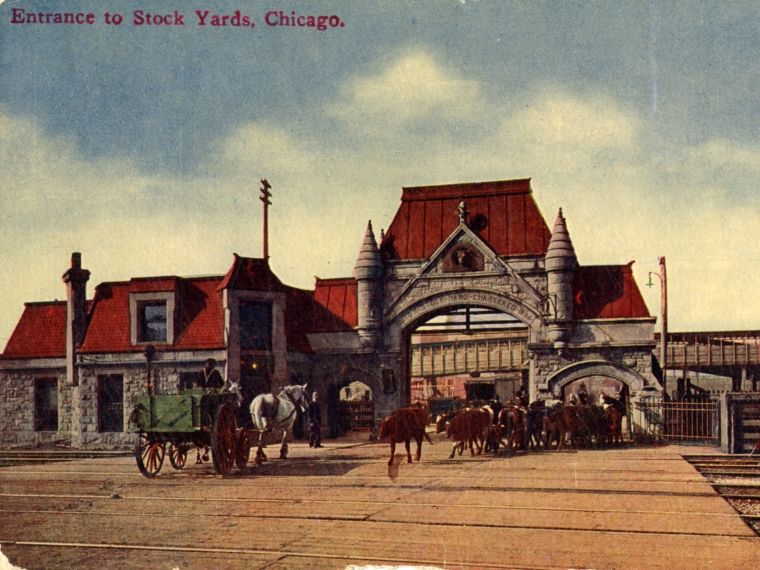The Union Stock Yards & Transit Company did not actually buy, sell or slaughter animals. Instead they provided facilities to care for, auction and move the animals between railroads. Factors often mentioned in the success of their business model are integrity and cash sales. Commission agents were bonded and all sales were cash.
Thus an Oregon shipper could send 1300 cattle to Chicago, and be certain that they would be sold for a fair price and the money immediately sent. Likewise if a packing house in Cincinnati ordered a million pounds of live steers, they knew what they were getting.
The yards were at their peak in the period 1890-1930. As many as one quarter of Chicago’s workers were employed in related businesses, over ten million animals were slaughtered annually and Chicago supplied over 80% of America’s meat. A good source of statistics is The Daily News Almanac.
Typical are the statistics for 1895:
- Cattle: 2,588,558 received, 785,092 shipped
- Hogs: 7,885,288 received, 2,100,618 shipped
- Sheep: 8,406,789 received, 474,646 shipped
- Horses: 118,198 received, 109,146 shipped
The difference between receipts and shipments is the number left in Chicago for the slaughterhouses. This means about 1.8 million cattle, 5.7 million hogs and 8 million sheep were slaughtered that year.
Notice that only 9,000 horses were left in Chicago. It is likely that these horses were being bought to work in Chicago—not slaughtered. Old horses did wind up in rendering tanks, but Americans wouldn’t eat them. The 109,000 horses transshipped through Chicago were likely destined to work in the eastern cities. Foreign buyers also bought animals.
According to the Illustrated History of the Union Stockyards, horses went first class in other ways. Horses were auctioned individually and had a one day return policy. Horses were even individually graded, ranging in modern terms from: 1: Gorgeous to 5: Able to walk.
Several teams of horse barbers were available who would get rid of the country hick hairdo and tie ribbons in the horse's mane.




Add a comment to: Union Stockyards, Part 2: Technology That Changed Chicago